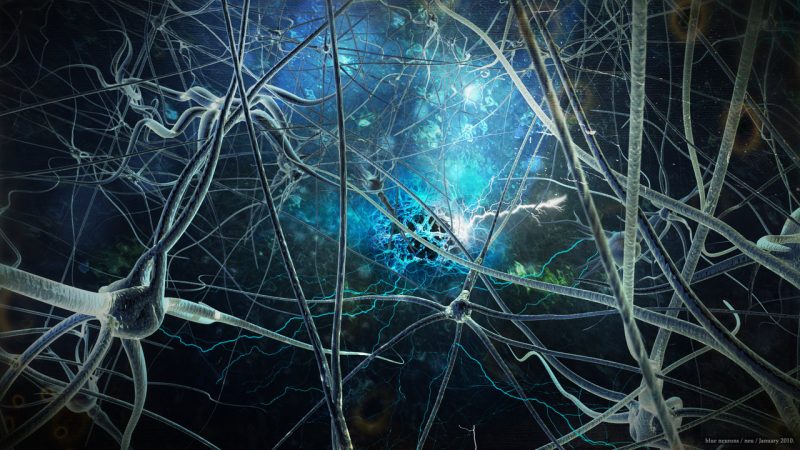
When problems come up in my life, I like to take a very proactive approach to healing and finding solutions. This week, I had a few things come up that made feel bad. I wasn’t debilitated by them (and thank Goddess! Because I used to wait and let my shit build up until it got debilitating and then I had no choice but to take action to make the correction. Because I was so debilitated, it really made the problems seem much greater than what they were. I have learned to nip things in the bud when they arise.) but I was super aware that a storm was brewing in the depths of my psyche.
This morning, when I awoke, I took out my journal and started doing one of my Shadow Work exercises. I discovered that there was a limiting belief that I was holding. I believed, on a subconscious level, that I was a failure, and when those problems cropped up, it brought the feelings of failure to the forefront of my emotional self and I found myself feeling lonely, isolated and weak.
As I sat working through the Shadow Work process, I realized that I had worked on this issue of failure before. And it struck me so strangely that I had forgotten that I wasn’t a failure. I had forgotten that I am unlimited! And then it started to occur to me that I was missing a significant step in the healing process–my brain. Seriously! I had checked in on my Inner Children, and they were like, “Hey, we’re fine. We’re not the issue.” I had a profound healing experience around my mother (and my father) recently, and when I checked in with her, I got the same response– no issue here. So I sat for a moment, and then it hit me: this shit is habitual! “I am a failure” is a knee-jerk response that occurs every single time these ‘problems’ or similar issues crop up in my life. I have the same pattern of response: I get nervous, I get scared, and I want to curl up in a ball. And then I start remembering times in the past when I had gotten myself into the ‘same’ predicament and how painful it was to pull myself out. I then start remembering how I had invested so much time and heart and had felt totally deceived by the outcome. Blah, blah, blah. This morning, though, there was a voice coming from my Solar Plexus telling me, “This is NOT the same situation as before. You are NOT the same person that you were before. The illusion is that it is the same, and your job is to fight against the belief in that illusion. You simply must fight if you want the transformation.”
WOW! That was a really powerful message. It felt so RIGHT and TRUE and so I said, “Yes,” to that voice and all that it embodied and I started to work on that part of my brain which was still wanting to believe that I am a failure. As I sat there exploring my inner world, I realized that I had a neural pathway that would automatically trigger every time I perceived one of these issues or problems that I was having. Upon being faced with a problem, like little sparks of light, the neural pathways in my brain would go off and I would start thinking disempowering thoughts. So in a flash of inspiration, I created a little program that I could use to help me create new neural pathways that were fun and exciting and life-affirming, instead of relying on the old neural pathways that always created feelings of sadness, withdrawal, and despair.
Have a look at my program and tell me what you think. You can leave your comments and questions below.
11-steps to change a neural pathway
- Be aware. Become aware of where you can see that your negative neural pathway is disrupting the flow of joy and excellence in your life. Observe yourself from the inside and outside. Keep a journal of things that are not working for you and see if you can start to piece together your patterns of response. For example, if you have an issue with compulsive eating, you might start making notes in your journal throughout the day of when the urge to eat arose, what you were doing when it arose and how you felt emotionally. You can also note the time. This will give you deep insight to your compulsion and your brain activity.
- Decide to change the neural pathway. The act of making a decision aligns you with the outcome you desire. This is a Solar Plexus chakra action. The Solar Plexus chakra is responsible for your will and your volition. It is the driver of desire. When changing a neural pathway, you have to find the will to change (the desire to change) and then you have to make a choice: change it or not. Deciding to change a habit is a pivotal step in getting you aligned with your desires.
- Make a plan. The brain needs to have a set of rules laid out so that it can orient itself. You don’t have to enforce the rules like a tyrant, but rather let the plan be a road map to help you get oriented with respect to your desire. For example, if your disempowered neural pathway is set to reach for chocolate or candy when you feel stressed, you might want to have a plan in place that suggests walking away from the kitchen or going on a walk around the block when the feeling of stress arises. You may want to have a backup plan that offers you a set of satisfying nutritious foods that can replace the sweet craving. Having such a plan in place before you find yourself in the middle of an anxiety episode would help you get grounded more quickly than if you are left to try to figure it out in the middle of the conflict.
- Personal motivation and personal inspiration. Give yourself an added boost by listening to motivational talks and watching motivational videos on a regular basis every day. Read books that inspire you and as you’re reading, get into the habit of affirming that you desire that success. Notice when you feel doubt and do your Shadow Work to alleviate the concern. You can also use a vision board to give you a point of focus during those times when you feel weak so that you can move foward; and when you feel strong, it will inspire you to more expansion.
- Meditate and visualize. Set yourself (and your brain) up for success by meditating and visualizing at the start and end of your day. Both meditating and visualizing train your brain to think differently about things. This period of your day is a strong affirmation of self-love because it says that you care enough, and believe enough in your Self and your dreams to dedicate a part of your day to their well-being. Just like with a child, quality time is transformational and life-affirming. Meditation comes in many different forms and you can choose how you want to use it in this process of changing your neural pathways. You might use meditation as a reflective tool, where you sit quietly and reflect on the new neural pathway– why you want it, why it serves you. This can be a great way to commune with your Spirit Guides to give you deeper insight into your life purpose. You can also use a silent mind meditation where you practice halting your thoughts and just enjoy the absolute peace and serenity of a mind that is turned off. This is immensely satisfying and restful for the mind and body. Visualizing can also be used to create the pleasing sensations in your body that act as strong points of attracting the things that you desire. For example, visualizing yourself running a marathon with ease creates a sense of elation in your body and mind and will leave you excited and ready to move! Likewise, visualizing a loving intimate relationship will warm your heart and cause you to glow from the inside out. Your brain and your body both LOVE this and it’s along these upbeat and optimistic lines that you want your new neural pathways built.
- Treat yourself lovingly. Changing a neural pathway is a powerful step not only because of the benefits you receive but also because of the Shadow it enlightens. Many of the neural pathways that no longer serve us were formed to protect us in some way. They were formed to give us comfort when we were lonely, or to give us grounding when we were confused, or to distract us from fear or even terror. This means that inside of us is a wounded or frightened individual that has been hiding within a behavior. That behavior becomes a mask for the beautiful soul that lies beneath. Treat that wounded part of yourself like you would a traumatized child– with tremendous compassion and care. Your own reaction to this inner being will tell you a lot about the nature of the neural pathway. So pay attention to how you feel about yourself as you explore your inner world. If you find yourself revolted or ashamed by this fragile being, you have an opportunity to awaken to other subconscious personalities that exist inside of yourself that may want healing. Shadow Work and Healing can help you integrate all of your fractured selves.
- Change your focus. When you’re changing a neural pathway, you want to affirm what you desire by creating new pathways that are trained to give attention to what you want. You probably have a neural pathway that is actively focusing on what you don’t want. You want to change your brain’s tendency by giving it a new focus. In your plan (see step 3,) you can create a list of positive things around your desire that excite you when you focus on them. For example, if you are wanting to change a neural pathway where you hide from intimate romantic relationships, you might want to have the heart as a point of focus whenever potential romantic partners are present. This way, when you find yourself in the presence of potential partners, your brain can focus on expanding your heart rather than repeating the same inner dialogues of, “I’m not his type,” or “She’s going to reject me,” or “I’m not attractive.” Using a vision board is also a good way to give yourself another point of focus. Your vision board can have a picture of you receiving positive attention from romantic partners. This will give you a reminder of your desire and bring you a point of positive focus. Music is also a great distraction and positive point of focus. Have a playlist made of some inspiring songs that provide a counterpoint to the old habit you want to transform. Just the act of choosing a song is a great way to break the neural pathway chain that is trying to force its way into your mind and actions.
- Address your problems: When a problem arises in your mind, address the problem consciously. For example, if there is a real financial issue that needs your attention, then give it your attention. Call your creditors and make payment arrangements. Make a budget. Ask for a raise. Get a second job. Do whatever you have to do to actively alleviate the physical burden of the situation. ‘Ignoring a problem’ is very different than ‘allowing a solution to flow’ to you. ‘Ignoring a problem’ is an act of resistance that comes from fear in the subconscious mind. ‘Allowing a solution to flow’ is an empowered state of mind that is open and aware. It is a way to confront an issue head on. Take care of your business.
- Be consistent. Neural pathways form from repetitive actions. Reaching for pot one time at the end of a long day is not going to form a neural pathway. Consistently reaching for pot every night it is. Reaching for a positive outcome one time is not going to change a neural pathway. Consistently reaching out toward the thing that you desire is going to create a new neural pathway and a new habit. It doesn’t matter whether marijuana is addictive or not– a neural pathway is a program and acts in a similar way to addiction. You have to practice your new programming every day. Make your new neural pathway your ‘addiction.’
- Set a timer. One of the most consistent excuses I hear from my clients is that they forgot that they were working to break an old habit. They were good for the first two days, and then the motivation left them. Setting a timer to focus on what you want is a practical way to give yourself five minutes in the middle of the day to clear discordant energy from your mind, body and aura, and to focus on your desires. It’s super effective, too! I began the practice of setting a timer years ago and I now have a solid neural pathway that makes me pause at several points of the day just to simply check in with my body and my emotions. This keeps me super aware of my authentic truth and aligned with the things that serve me, and on point with the things that don’t.
- Appreciation. It’s always easy to find appreciation for the lovely things in our lives. But it’s not so easy to find appreciation for the dark things. Let’s say that your years of compulsive eating have made you 50 pounds overweight and feeling pretty crappy about yourself. It’s not easy to look at your body and appreciate the fat that has accumulated around your belly– especially since you not only have a neural pathway to compulsively eat, but you also have a neural pathway that automatically triggers you to feel ashamed and anguished every time you think about your belly. Finding appreciation for the belly fat is a powerful way to turn this negative thought pattern upside down. It will also do wonders for your self-esteem. For example, by doing Shadow Work, you might discover that when you were a little kid, eating cookies and hot dogs gave you tremendous comfort when you were lonely. When you choose to appreciate cookies and hot dogs for what they offered you back then, you start to develop a tenderness toward the Inner Child who needed those things. This is a really powerful neural pathway to develop because it totally empowers your self-acceptance and self-love. Many people think that if they appreciate what is negative in their lives that they’re actually condoning it. But in my personal experience, and what I’ve noticed with my clients is that when you start having appreciation for what’s negative, the negative thing ceases to be a problem and then the mind stops focusing so much on it, so there’s less emphasis on the issue, not increased emphasis. Very often, you’ll start to notice that you’re carrying around less resentment and since compulsive behaviors actually feed emotions like resentment, you’ll find that you’re less hungry for the compulsion that feeds it. This is genuine healing– not a band-aid quick fix.
So there you have my 11 steps for changing a neural pathway. I hope you find it helpful. Leave me your comments below!





 Hi there! My name is Crystal Lynn Bell and I am a Spiritual Empowerment Coach. I'm currently living in Paris, doing my coaching, writing my book, and studying French language and culture at the Sorbonne. I love Paris and I'm excited to be hosting a retreat here this winter called
Hi there! My name is Crystal Lynn Bell and I am a Spiritual Empowerment Coach. I'm currently living in Paris, doing my coaching, writing my book, and studying French language and culture at the Sorbonne. I love Paris and I'm excited to be hosting a retreat here this winter called 



This was a pleasant read as I work through the changes of old core beliefs and establish new ones. Great tips and guidance!
Serena, I’m so glad you enjoyed it. Keep up your excellent work, Sister!!!